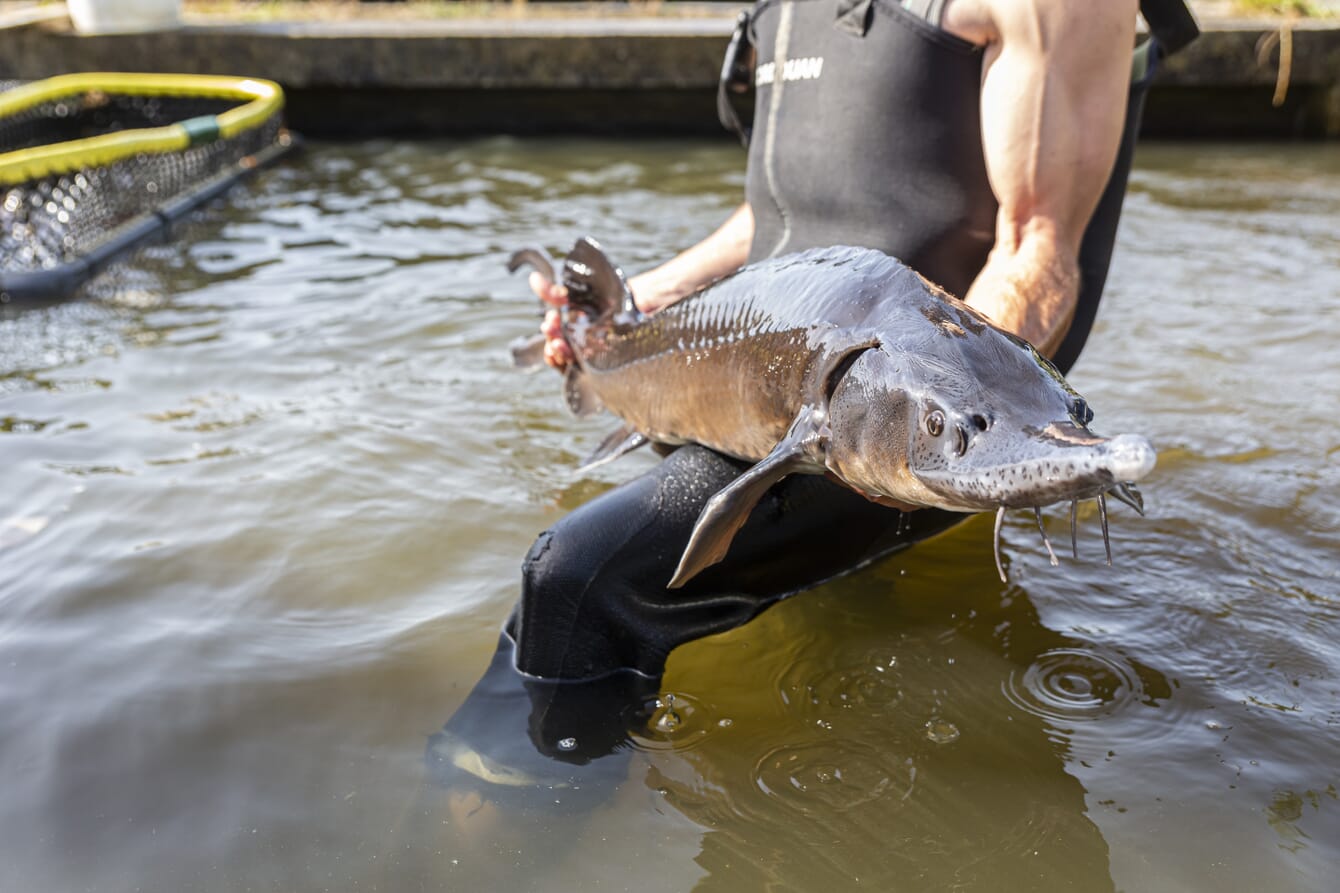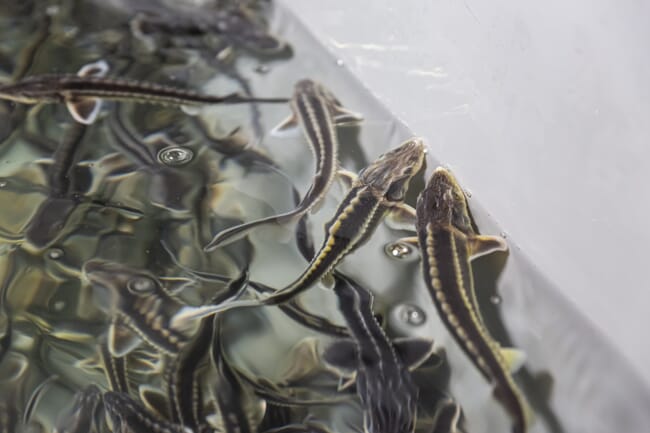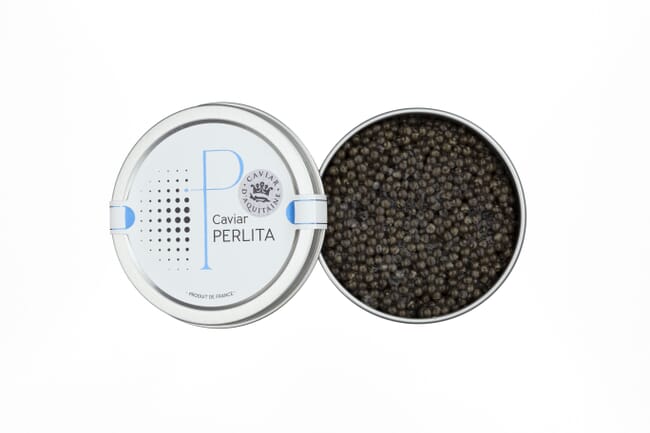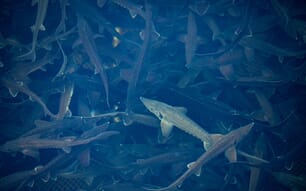
© Eric Boulommié
The Gironde Estuary, in France’s Nouvelle-Aquitaine region, once had a thriving fishery for wild European sturgeon (Acipenser sturio). However, the species was so overexploited for its caviar that it nearly became extinct in the 1970s, leading to a ban on fishing for the species in 1982. Since 2010, CITES has banned fishing and trade of all wild sturgeon around the world.
In response to the 1982 restrictions, the CEMAGREF – a French public research institute in agronomy and environment – swiftly introduced the Siberian sturgeon (Acipenser baeri) strain into France for aquaculture production. And Nouvelle-Aquitaine – the former stronghold of the French sturgeon fishery – is now where six out of the country’s seven sturgeon farms are located.
Of these L’Esturgeonnière stands out for having its own hatchery and being vertically integrated, from hatching to packaging. Thanks to a qualified staff of 20 employees, the farm produces 4 tonnes of caviar every year.
How the farm evolved
When Michel Berthommier and an associate bought the farm in 2007, he rapidly understood that if he wanted to manage the quality of its Siberian sturgeon – and therefore the quality of caviar – the hatchery was the key in the process. At that time, there was only one sturgeon hatchery in France – Guyenne’s hatchery, also located in Gironde – so Berthommier decided to take that opportunity and created a hatchery onsite, called Nurseteich, in 2008. The year after, a partnership with INRAe – the National Research Institute for agriculture, food and environment – was established to develop genetic selection programmes, largely based on the size, texture and colour of the eggs. They are also “vigilant at other zootechnical criteria such as growth, nice conformation, homogenous gonad distribution etc”. As the owner summarises it: “a big part of the success lies in the genetics”.
“It is the only French sturgeon farm that was built exclusively for this species,” explains Berthommier referring the origins of the farm. Created in 1991 at Le Teich, in the Bay of Arcachon, the farm initially produced sturgeon for their meat. However, in 1999, when L’Esturgeonnière was repurchased by the group in which Berthommier worked at the time, they decided to look into caviar production.
In the years following the purchase, significant investments were made in the infrastructure. First to increase the farm capacity from 150 to 300 tonnes of sturgeon. Then, in 2006, €3 million was invested in the filtration system, making the farm a pioneer in terms of environmental standards in freshwater fish farming. The farm began to use a mechanical filter – with a grid of 35µ – and a biological filter to remove waste from the water.
The waste was then spread in three sludge basins and the eutrophic water recycled by reeds. The replacement rate of the farm’s water is about 50 percent – the other 50 percent being recirculated. Even if a higher rate of water recirculation was feasible, the farm avoids it because, Berthommier says, it could lead to an unpleasant muddy taste in the final product.
Since 2020, an interesting research project has been going on in partnership with vine-growing researchers, who are looking to use the waste water to grow horsetail, a plant that could be an ecological alternative to phytosanitary products for vine diseases.

© Eric Boulommié
The production cycle
Each spring, in the 12 hatchery ponds, Nurseteich produces 100,000 juvenile Acipenser baeri sturgeon, of which 20 percent stay at the farm, while the other 80 percent are sold to farmers worldwide. Being able to produce juveniles onsite allows for better management of the upstream production, the traceability and genetic selection.
In the 6,000 m2 ponds, every year 260 to 280 tonnes of sturgeon females are raised. At around three years old, after ultrasound sexing, the males are separated and sold for their meat. After 8 to 9 years of farming, the females’ eggs are usually ready to be harvested. Unlike the classical method which requires a biopsy sampling, L’Esturgeonnière has decided to control the size of the eggs – a minimum of 2.6mm for Perlita standards – using one final ultrasound. According to Berthommier, this technique avoids healing issues – like abscess – and improves fish welfare.
The farm benefits from water from L’Eyre river and from a geothermal source that supplies the site with warmer water, especially during the winter. This warm water comes from a 2,000m former oil well that has been cemented shut long ago. As the optimal water temperature for sturgeon growth is between 17-18°C, this source of energy enables the farm to improve growth rates and to de-seasonalise their caviar production.
This geothermal energy is, along with the water treatment system, one of the two things that Berthommier is particularly proud of.

L’Esturgeonnière controls the size of the eggs from the female sturgeon to a minimum of 2.6 mm for Perlita standards © Thomas Pannetier
The farm’s challenges and ambitions
The farm’s main objective in the coming years is to manage its productivity and stabilise caviar production at 4 tonnes every year. At the end of each growing cycle the eggs represent 9-10 percent of a female sturgeon’s weight, so production can currently vary from 3 to 4 tonnes of caviar, per cycle. Caviar can be stored for a maximum of 12 months and it is sometimes complicated to find new markets, so predictability is a central goal for the production team. According to Berthommier, this will be possible through genetic selection.
Another significant challenge for the company is the rising price of electricity, which is increasing production costs.
France is currently the third largest caviar producer in the world, behind only China and Italy, with a production of 42 tonnes in 2019 and Berthommier is optimistic about the market’s future, with caviar being more affordable than in the past. This is why Caviar Perlita would like to develop its commercial strategy by selling more to retail, which currently represents 15 percent of its distribution. Looking ahead, as well as stabilising their current production levels, Berthommier is also considering expanding to another site.




